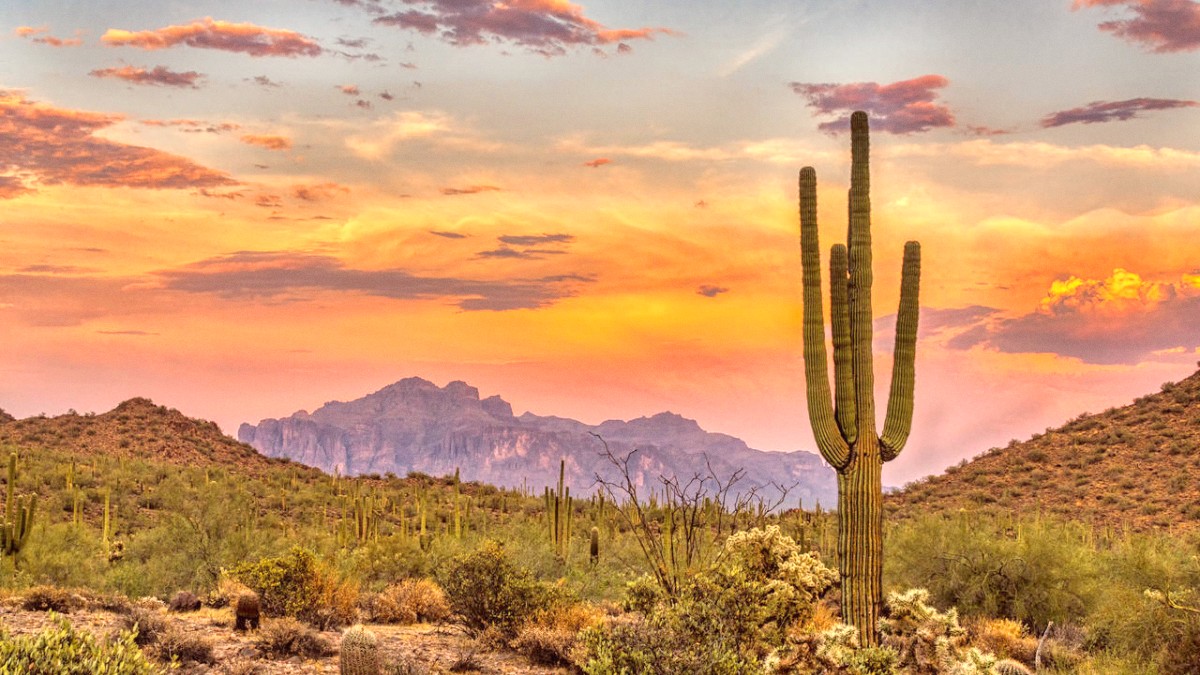
Southwest, USA
Tucson presents an authentic travel experience, a place to explore the outdoors, taste remarkable food, and discover a storied past. This guide is for navigating Tucson's full offerings, for a memorable and rewarding visit.
Tucson's proximity to the U.S.-Mexico border has shaped its culture. This closeness means a strong Mexican-American influence is present in the city's food, art, and language.
Visitors discover authentic Sonoran traditions without traveling far. The city serves as a gateway to exploring both sides of the border region, deepening cross-cultural dynamics. This geographical setting makes Tucson a place of distinct natural beauty and rich cultural exchange.
Tucson's history spans over 4,000 years, making it one of North America's longest continuously inhabited areas. The Tohono O'odham people and their ancestors have lived here for millennia, cultivating the land and developing unique desert survival methods. Their influence remains present in the landscape and cultural traditions. The O'odham's long presence shaped the area's agricultural practices and appreciation for desert resources. Many local heritage foods trace their roots to these early inhabitants.
European influence began in the late 17th century. Father Eusebio Kino, a Jesuit missionary, established the San Xavier del Bac Mission in 1692. This mission, located just south of present-day Tucson, served as a center for Spanish colonization and evangelization. The mission stands today as a remarkable example of Spanish colonial architecture and a spiritual beacon. The mission's continued use by the Tohono O'odham community highlights this enduring connection.
Continuously inhabited by Tohono O'odham and ancestors.
Father Kino establishes San Xavier del Bac Mission.
Presidio San Agustín del Tucson founded.
Tucson becomes part of independent Mexico.
U.S. Acquires Tucson via Gadsden Purchase.
The United States acquired Tucson as part of the Gadsden Purchase in 1854. This acquisition linked the region to the American Union. Tucson later served as the capital of the Arizona Territory from 1867 to 1877. This decade as the territorial capital spurred development and increased American settlement. The railroad arrived in 1880, advancing the city's growth, connecting it to the broader U.S. Economy and attracting new waves of settlers.
The city's architecture, language, and customs developed under Mexican rule. This cultural fusion marks Tucson's unique identity.
The San Xavier del Bac Mission stands today as a remarkable example of Spanish colonial architecture and a spiritual beacon.
Explore this layered history through museums, historic districts, and preserved sites.
Tucson is Arizona's second-largest city. As of 2023 estimates, the city limits hold approximately 547,243 people. The metropolitan area includes over 1 million residents. This size balances urban amenities and access to vast natural spaces. Tucson presents the conveniences of a larger city without the overwhelming scale of a major metropolis. Its population mix mirrors its rich history, with a significant Hispanic population and enduring Native American communities alongside diverse American residents.
Tucson is known for its unique desert landscape. This landscape features the iconic saguaro cacti. These towering plants yield striking visuals, especially at sunrise and sunset. Beyond the cacti, the desert thrives with mesquite trees, palo verde trees, and various desert wildlife. The surrounding mountains contribute to this scenic beauty, setting a dramatic backdrop to the city. These natural features make outdoor activities like hiking, cycling, and birdwatching popular pursuits year-round. The city actively preserves these natural areas, with Saguaro National Park a leading example.
Iconic saguaros define the views. Mountains offer dramatic backdrops.
Galleries, museums, and public art fill the city.
4,000 years of food history with unique flavors.
Industries in Tucson include aerospace, optics, technology, and tourism. The University of Arizona is a major research institution and an economic driver.